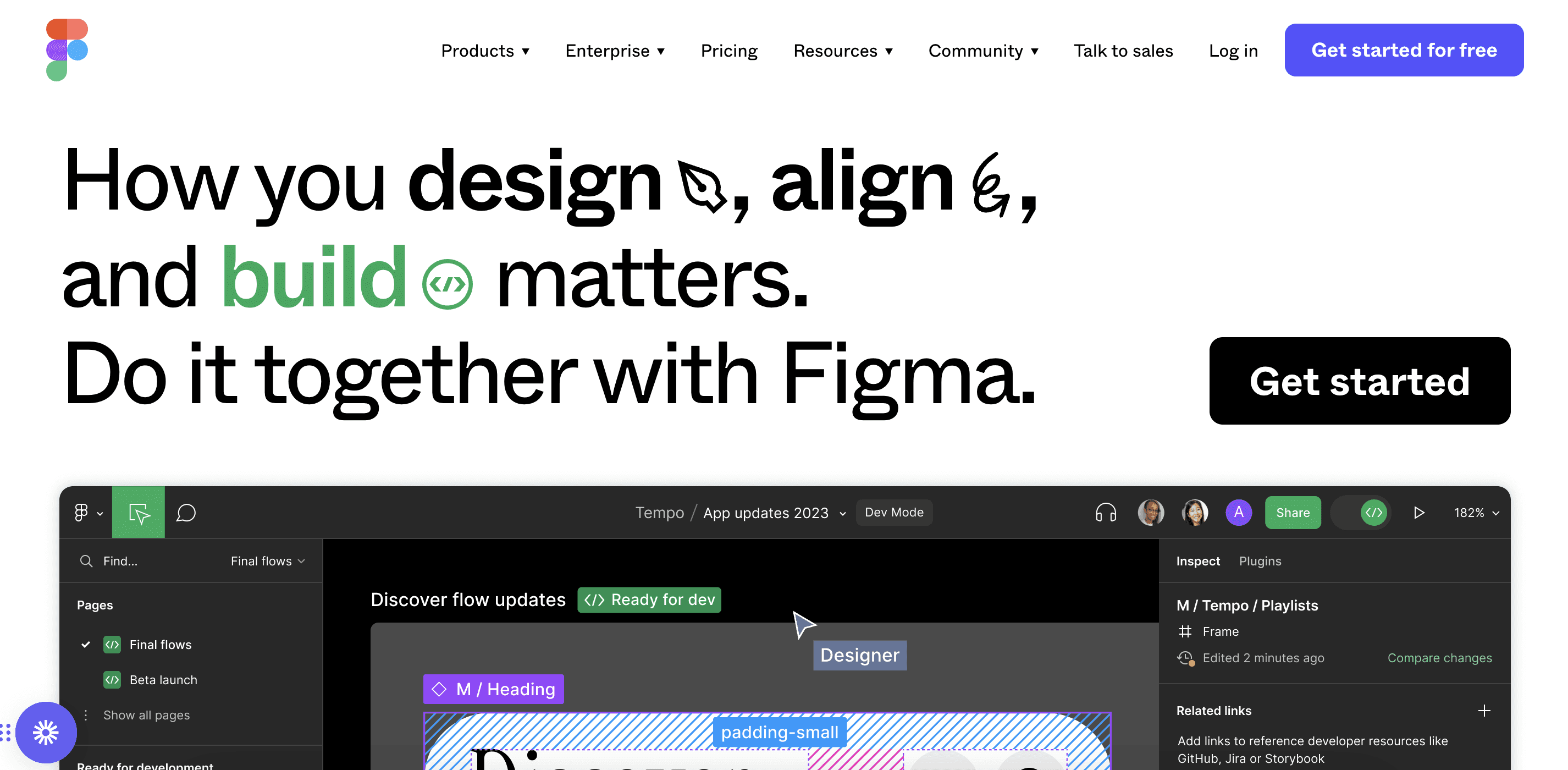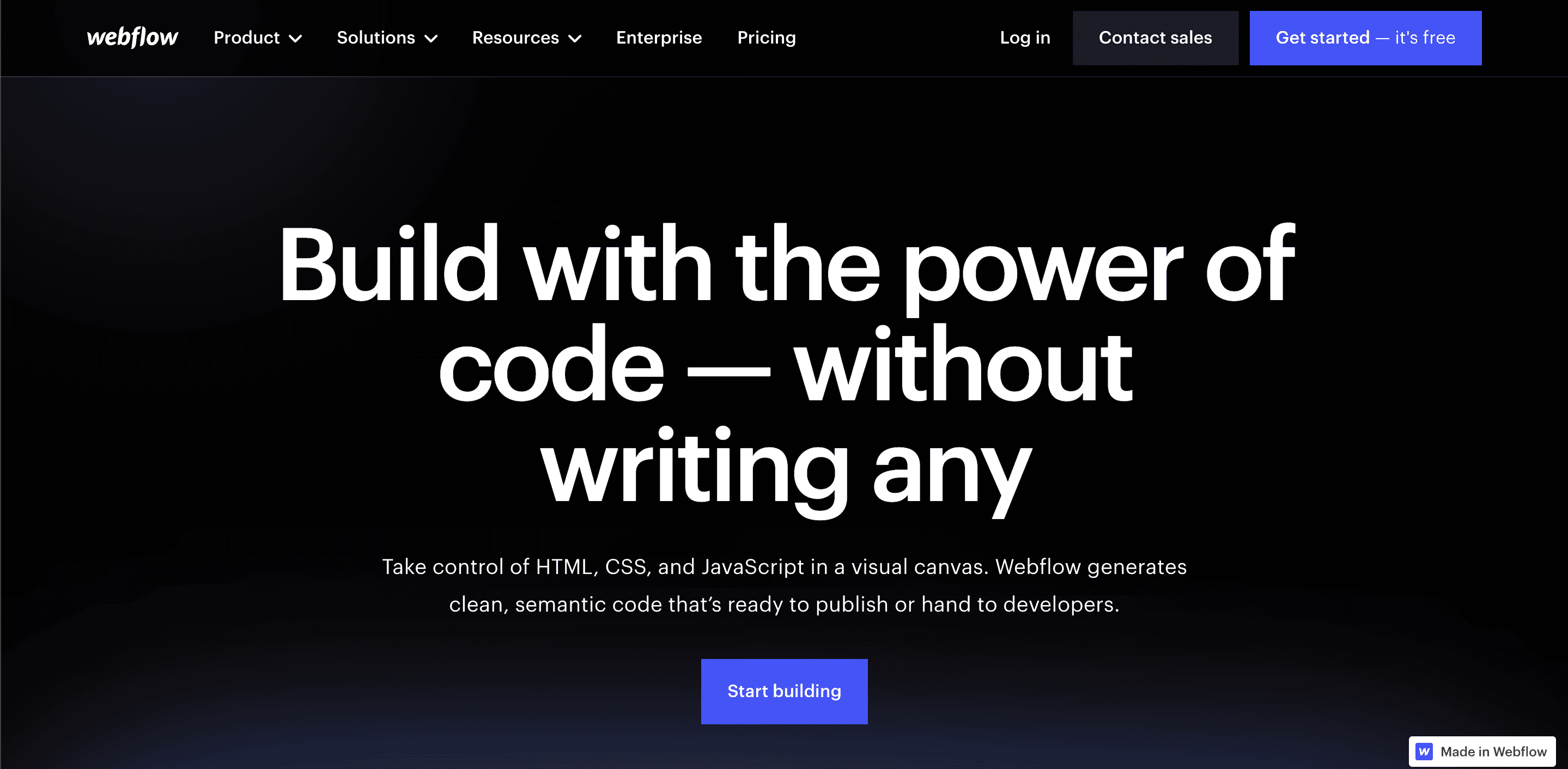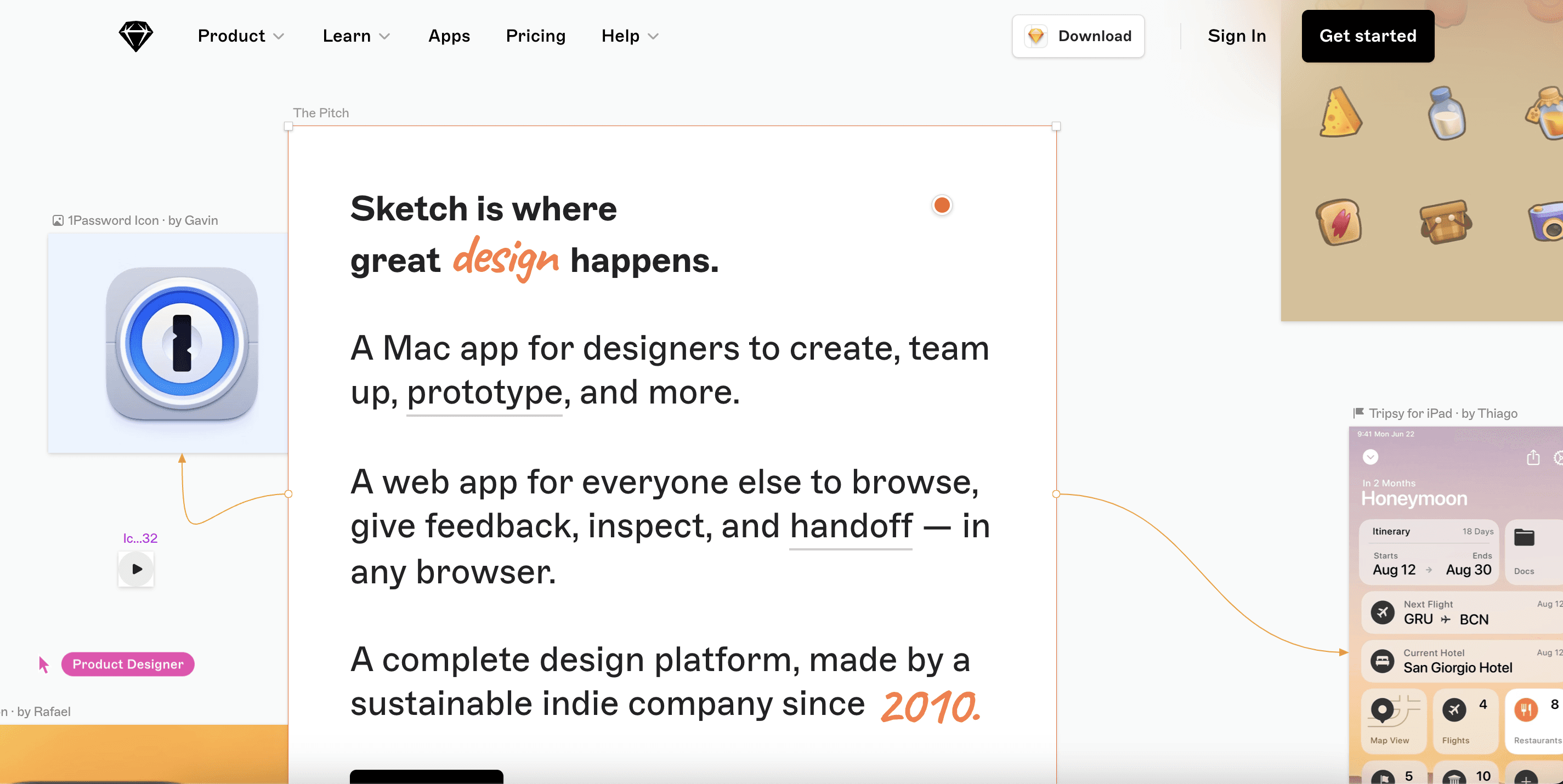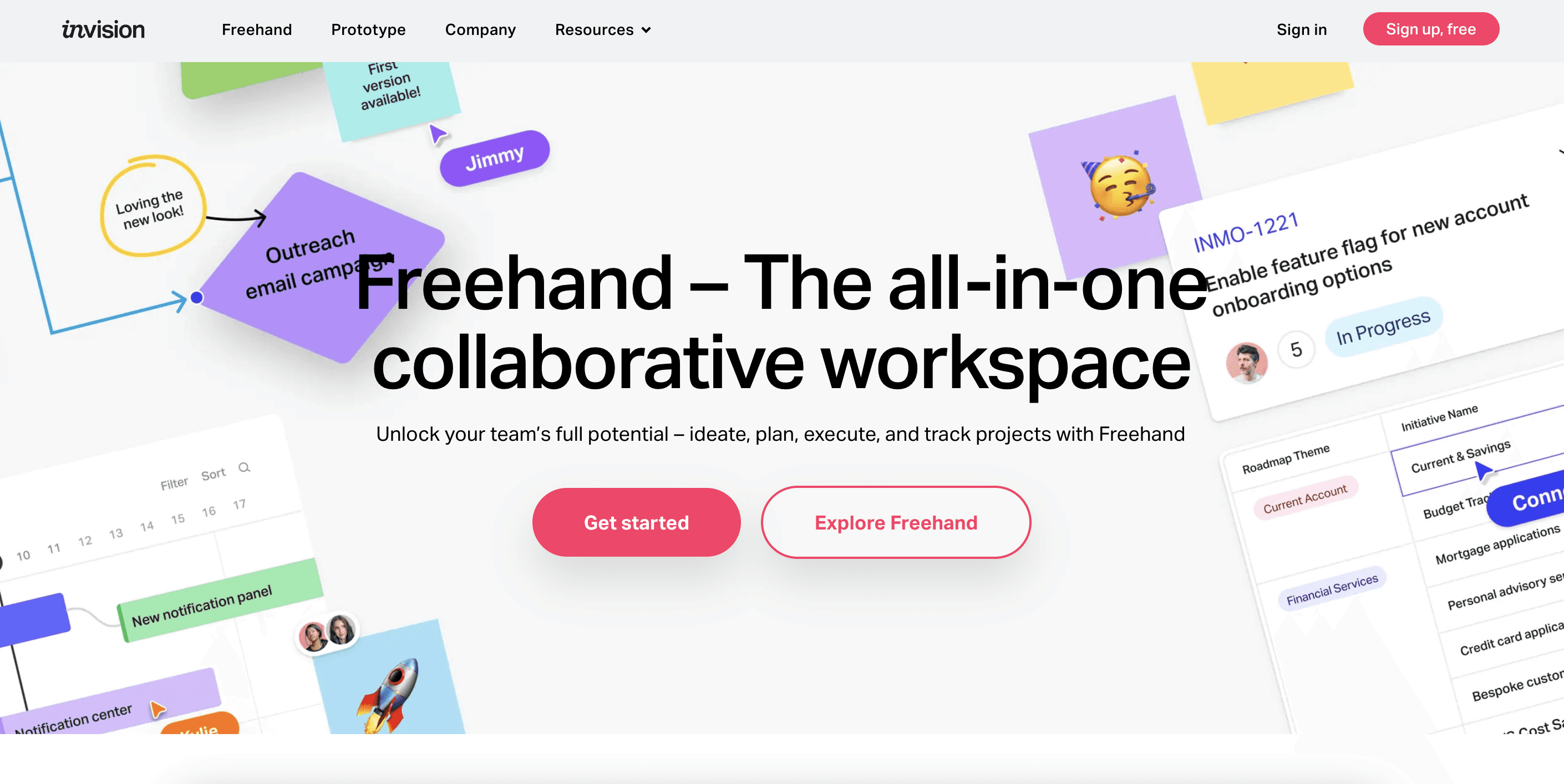Framer AI has emerged as a powerful tool for designers, offering an AI-powered approach to streamline design and prototyping workflows. But with a diverse design landscape, it's natural to explore alternatives that might better suit your specific needs. This guide dives deep into the top Framer AI alternatives, meticulously evaluating their features, pricing structures, and user experiences.
Our goal is to empower you with a clear understanding of the available options – from cost-effective solutions to those offering maximum flexibility. Through in-depth analysis and user insights, we'll equip you to make informed decisions and select the ideal design and prototyping tool for your projects.
Why Seek Framer AI Alternatives
While Framer AI has revolutionized the design and prototyping process for many users, there are several reasons why individuals or businesses might consider alternatives. Here are some of the most common reasons:
Cost: Framer AI's pricing plans can be restrictive for individuals or small businesses, especially those with limited budgets.
Limited customization: While Framer AI offers a range of templates and design elements, some users may find the customization options limited.
Dependence on AI: Framer AI's AI-driven design process might not be suitable for every project, and some designers may prefer a more manual approach.
Integration: Framer AI's integration with other tools and platforms might not be as seamless as some users would like.
Top Framer AI Alternatives
A. Figma

Features and capabilities: Figma is a cloud-based design tool that offers a range of features for creating wireframes, prototypes, and high-fidelity designs, including multi-player collaboration, real-time commenting, and integrated design systems. It also has a robust plugin ecosystem and supports APIs for automation and integration with other tools.
Pricing models: Figma offers a free plan with limited features, as well as several paid plans with varying features and capabilities. The prices range from $12/editor/month to $40/editor/month.
Pros and cons:
Pros: Figma is known for its user-friendly interface, robust collaboration features, and seamless integration with other tools. It is also relatively affordable compared to other design tools.
Cons: Figma may not offer the same level of customization as other tools, and its free plan has limited features.
User feedback and reviews: Figma has positive reviews for its user-friendly interface, collaboration features, and affordability. However, some users report issues with the limited customization options and the occasional glitches.
Use cases and industries suited for Figma: Figma is suitable for designers who want a tool that seamlessly integrates with other tools and platforms, such as Slack, Google Drive, and GitHub. Figma is well-suited for product design, user experience (UX) design, and user interface (UI) design. It is also suitable for industries that require real-time collaboration and feedback, such as software development, marketing, and advertising.
B. Webflow

Features and capabilities: Webflow is a design and development tool that allows designers to create visually stunning websites without any coding. It offers a wide range of features, including responsive design, animations, and custom fonts.
Pricing models: Webflow offers a free plan with limited features, as well as several paid plans with varying features and capabilities. The prices range from $12/month to $36/month.
Pros and cons:
Pros: Webflow is known for its user-friendly interface, visually stunning designs, and seamless animation capabilities. It is also relatively affordable compared to other design tools.
Cons: Webflow may not offer the same level of customization as other tools, and its free plan has limited features.
User feedback and reviews: Webflow has positive reviews for its user-friendly interface, design capabilities, and affordability. However, some users report issues with the limited customization options and the occasional glitches.
Use cases and industries suited for Webflow: Webflow is a great alternative to Framer AI for designers who want to create visually stunning websites and web applications with advanced interactivity and animations. It's also suitable for designers who want a tool that offers a seamless transition from design to development. Webflow is well-suited for web design, graphic design, and digital marketing. It is also suitable for industries that require visually stunning designs, such as e-commerce, fashion, and hospitality.

C. Adobe XD

Features and capabilities: Adobe XD is a user experience design tool that offers a wide range of features, including responsive design, collaboration, and design systems. It's known for its integration with other Adobe tools and its ease of use. It also has a robust plugin ecosystem and supports APIs for automation and integration with other tools.
Pricing models: Adobe XD is part of Adobe's Creative Cloud, which offers a variety of pricing plans, including a free trial, a student and teacher edition, and several paid plans with varying features and capabilities. The prices range from $19.99/month to $74.98/month for the enterprise plan.
Pros and cons:
Pros: Adobe XD offers a seamless integration with other Adobe tools, making it an excellent choice for designers who already use Adobe's suite of products. It also has a robust feature set and a user-friendly interface.
Cons: Adobe XD can be quite expensive, especially for the enterprise plan, and some users have reported issues with the tool's performance and stability.
User feedback and reviews: Adobe XD has positive reviews for its integration with other Adobe tools and user-friendly interface, but some users have reported issues with the tool's performance and stability.
Use cases and industries suited for Adobe XD: Adobe XD is a great alternative to Framer AI for designers who work within the Adobe ecosystem and want a tool that seamlessly integrates with other Adobe tools like Photoshop and Illustrator. It's also suitable for designers who want a tool that offers advanced prototyping features, such as voice UI and auto-animate.
It is commonly used in the graphic design, advertising, and digital marketing industries.
D. Sketch

Features and capabilities: Sketch is a digital design tool that's popular among UI/UX designers,and it's known for its ease of use and versatility. It offers a wide range of features, including responsive design, collaboration, and design systems. It also has a robust plugin ecosystem and supports APIs for automation and integration with other tools.
Pricing models: Sketch offers a free plan with limited features, as well as several paid plans with varying features and capabilities. The prices range from $9/month to $49/month for the enterprise plan.
Pros and cons:
Pros: Sketch has a user-friendly interface and offers robust collaboration features, making it an excellent tool for teams. It also has a large community of users and a rich ecosystem of plugins and integrations.
Cons: Sketch can be quite expensive, especially for the enterprise plan, and some users have reported issues with the tool's performance and stability.
User feedback and reviews: Sketch has positive reviews for its collaboration features and user-friendly interface, but some users have reported issues with the tool's performance and stability.
Use cases and industries suited for Sketch: Sketch is well-suited for teams and organizations that require robust collaboration features and a high level of customization. It is commonly used in the software development, product design, and startup industries.

E. InVision

Features and capabilities: InVision is a design tool that offers a wide range of features, including responsive design, collaboration, and design systems. It also has a robust plugin ecosystem and supports APIs for automation and integration with other tools.
Pricing models: InVision offers a free plan with limited features, as well as several paid plans with varying features and capabilities. The prices range from $15/month to $75/month for the enterprise plan.
Pros and cons:
Pros: InVision has a user-friendly interface and offers robust collaboration features, making it an excellent tool for teams. It also has a large community of users and a rich ecosystem of plugins and integrations.
Cons: InVision can be quite expensive, especially for the enterprise plan, and some users have reported issues with the tool's performance and stability.
User feedback and reviews: InVision has positive reviews for its collaboration features and user-friendly interface, but some users have reported issues with the tool's performance and stability.
Use cases and industries suited for InVision: InVision is a great alternative to Framer AI for designers who want a tool that's specifically tailored for UI/UX design and offers advanced collaboration features. It's suitable for designers who want a tool that seamlessly integrates with other design tools like Sketch and Figma, as well as project management tools like Trello and Asana.
InVision is well-suited for teams and organizations that require robust collaboration features and a high level of customization. It is commonly used in the software development, product design, and startup industries.
Choosing the Right Alternative
Factors to consider
Design requirements: Consider the specific design needs of your project, such as responsive design, animations, and interactivity.
Collaboration features: Evaluate the importance of collaboration tools, such as real-time commenting and feedback, and the number of users who will need access.
Budget considerations: Determine your budget for design tools and consider the pricing models of each alternative.
How to choose the most suitable alternative
Assess your needs: Evaluate your design requirements, collaboration needs, and budget considerations to determine which alternative best meets your needs.
Research and compare: Research each alternative, considering their features, pricing models, pros, and cons. Compare them side-by-side to determine which one best fits your needs.
Try them out: Take advantage of free trials or demos to test out each alternative and determine which one feels the most comfortable and suitable for your needs.

Future Trends in Web Design Tools
Emerging trends
AI-driven design: The use of artificial intelligence in web design is becoming increasingly prevalent, and is expected to continue to play a major role in shaping the industry's future. AI-driven design tools can help automate repetitive tasks, provide design suggestions, and enable designers to focus on more creative and high-level tasks. Framer AI is one such tool that uses AI to create interactive prototypes and design assets, and its alternatives include Adobe XD, InVision, and Sketch.
Collaborative design: With the rise of remote work, collaboration has become a critical aspect of web design. Designers are increasingly working with teams across different locations, and collaboration tools are becoming essential for streamlining the design process. Collaborative design tools enable designers to work together in real-time, provide feedback, and iterate quickly.
Mobile-first design: As mobile devices become the primary means of accessing the web for many users, mobile-first design has become a crucial aspect of web design. Designers are prioritizing mobile-friendly designs that are responsive, fast, and provide a seamless user experience.
Speculation on the future of AI-driven design tools
Improved collaboration: The integration of AI and collaboration tools is expected to continue, enhancing the design process and enabling designers to work more efficiently. AI-driven design tools will likely become more sophisticated, providing designers with real-time feedback and suggestions, and enabling them to work together with other team members seamlessly.
Enhanced customization: AI-driven design tools are expected to offer increased customization options, enabling designers to create highly tailored designs that meet the unique needs of their clients. AI will help designers create custom designs that are optimized for different devices, screen sizes, and user experiences.
Streamlined workflows: The integration of AI and automation is expected to simplify design workflows, enabling designers to focus on high-level tasks and automating repetitive tasks. AI-driven design tools will likely become more intuitive, enabling designers to work more efficiently and deliver high-quality designs faster.
The future of web design tools looks promising, with emerging trends and speculation on the future of AI-driven design tools pointing towards a more efficient, collaborative, and customized design process. Designers will need to stay up-to-date with these trends and embrace the changes that AI-driven design tools bring to the industry. By doing so, they will be able to create innovative, user-friendly, and effective web designs that meet the evolving needs of their clients and users.
Framer AI and its alternatives, such as Adobe XD, InVision, and Sketch, are leading the way in AI-driven design, and designers who adopt these tools can expect to streamline their workflows, improve collaboration, and enhance customization. As AI technology continues to advance, we can expect to see even more exciting innovations in the world of web design.
Additional Resources
If you're interested in learning more about Framer AI and its alternatives, here are some additional resources to check out:
Framer AI official website: https://framer.com/ai/
Figma official website: https://www.figma.com/
Webflow official website: https://www.webflow.com/
Adobe XD official website: https://www.adobe.com/products/xd.html
Sketch official website: https://www.sketch.com/
InVision official website: https://www.invisionapp.com/
The Grid official website: https://thegrid.io/
AI-powered design tools for websites: https://www.Canva.com/learn/ai-powered-design-tools-for-websites/
Prototyping tools for mobile app design: https://www.udio.com/blog/prototyping-tools-for-mobile-app-design/
Collaborative design tools: <https://www. Kolla.com/blog/collaborative-design-tools/>

Conclusion
Framer AI is a powerful tool for creating wireframes and prototypes, but it may not be the best option for every designer. By exploring alternatives to Framer AI, designers can find the tools that best suit their needs and create designs that are optimized for user experience and conversion rates. Whether you're looking for collaborative design tools, AI-powered design tools, or prototyping tools for mobile app design, there are many options available. Stay curious, explore related queries, and keep pushing the boundaries of what's possible in design.
If you're looking for more information on Framer AI, be sure to check out our blog for more articles and resources. And if you're ready to start creating wireframes and prototypes, try out some of the tools we've mentioned in this article.
Harish Malhi
Founder of Goodspeed
Harish Malhi is the founder of Goodspeed, one of the top-rated Bubble agencies globally and winner of Bubble’s Agency of the Year award in 2024. He left Google to launch his first app, Diaspo, built entirely on Bubble, which gained press coverage from the BBC, ITV and more. Since then, he has helped ship over 200 products using Bubble, Framer, n8n and more - from internal tools to full-scale SaaS platforms. Harish now leads a team that helps founders and operators replace clunky workflows with fast, flexible software without writing a line of code.
Frequently Asked Questions (FAQs)
What are the system requirements for running Framer AI alternatives?
The system requirements for running Framer AI alternatives vary depending on the tool. However, generally, a computer with a modern CPU, at least 8GB of RAM, and a dedicated graphics card is recommended.
Can Framer AI alternatives be used for creating 3D models?
Some Framer AI alternatives, such as SketchUp, can be used for creating 3D models. However, others, such as InVision and Figma, are primarily focused on 2D design.
Are Framer AI alternatives compatible with other design tools?
Most Framer AI alternatives offer integration with other design tools, such as Adobe XD, Sketch, and Figma. However, the level of compatibility may vary depending on the specific tools and versions being used.
Can Framer AI alternatives be used for creating animations and motion graphics?
Some Framer AI alternatives, such as InVision and Adobe XD, offer features for creating animations and motion graphics. However, others, such as SketchUp and Figma, are primarily focused on static design.
How do Framer AI alternatives handle collaboration and teamwork?
Most Framer AI alternatives offer collaboration features, such as real-time commenting, feedback, and version control. However, the level of collaboration support may vary depending on the specific tool and the number of team members.
Can Framer AI alternatives be used for creating responsive designs?
All Framer AI alternatives offer responsive design features, which allow designers to create designs that adapt to different screen sizes and devices.
What are the pricing ranges for popular Framer AI alternatives?
Pricing varies across alternatives: Figma ranges from $12-$40 per editor per month, Webflow from $12-$36 per month, Adobe XD from $19.99-$74.98 per month as part of Creative Cloud, Sketch from $9-$49 per month, and InVision from $15-$75 per month. Most tools also offer free plans with limited features.









